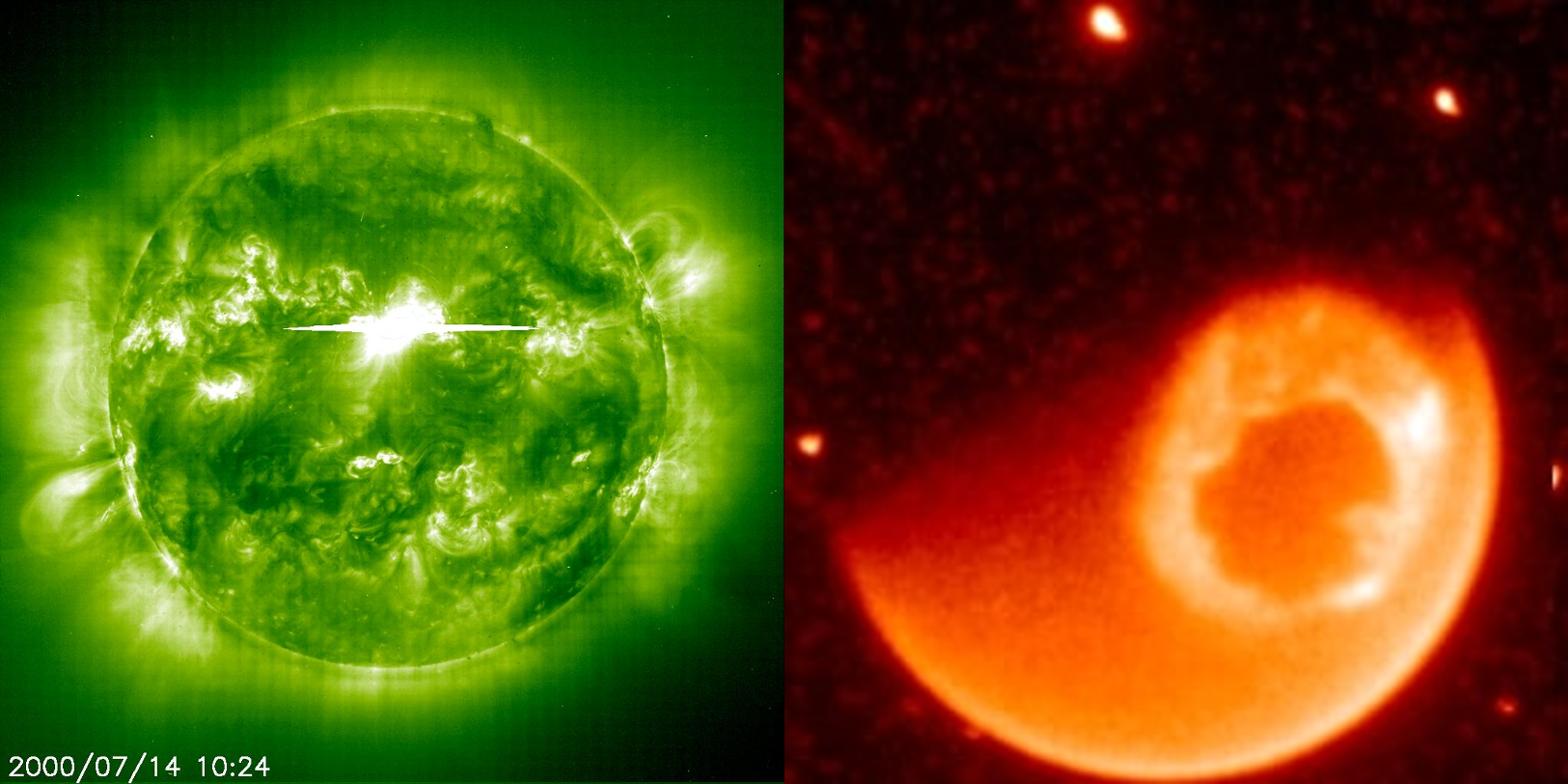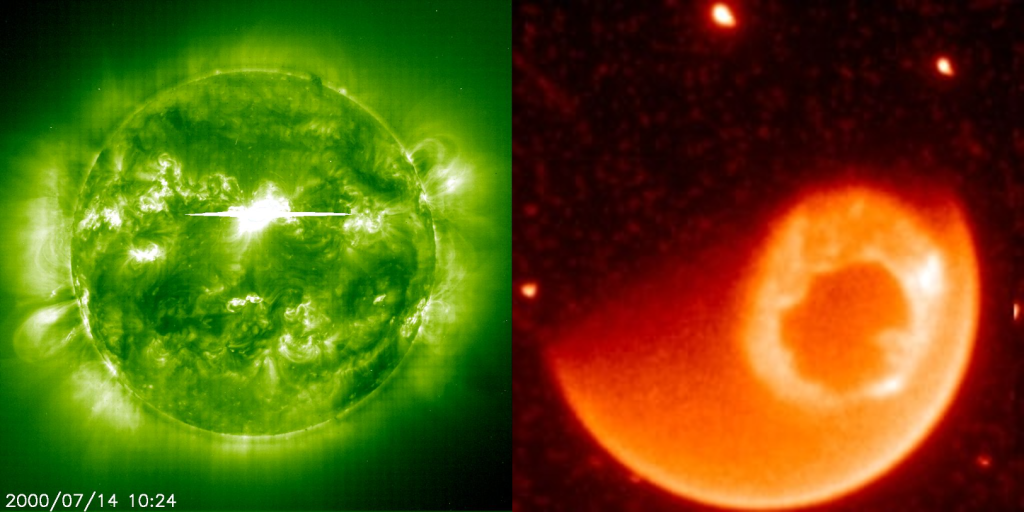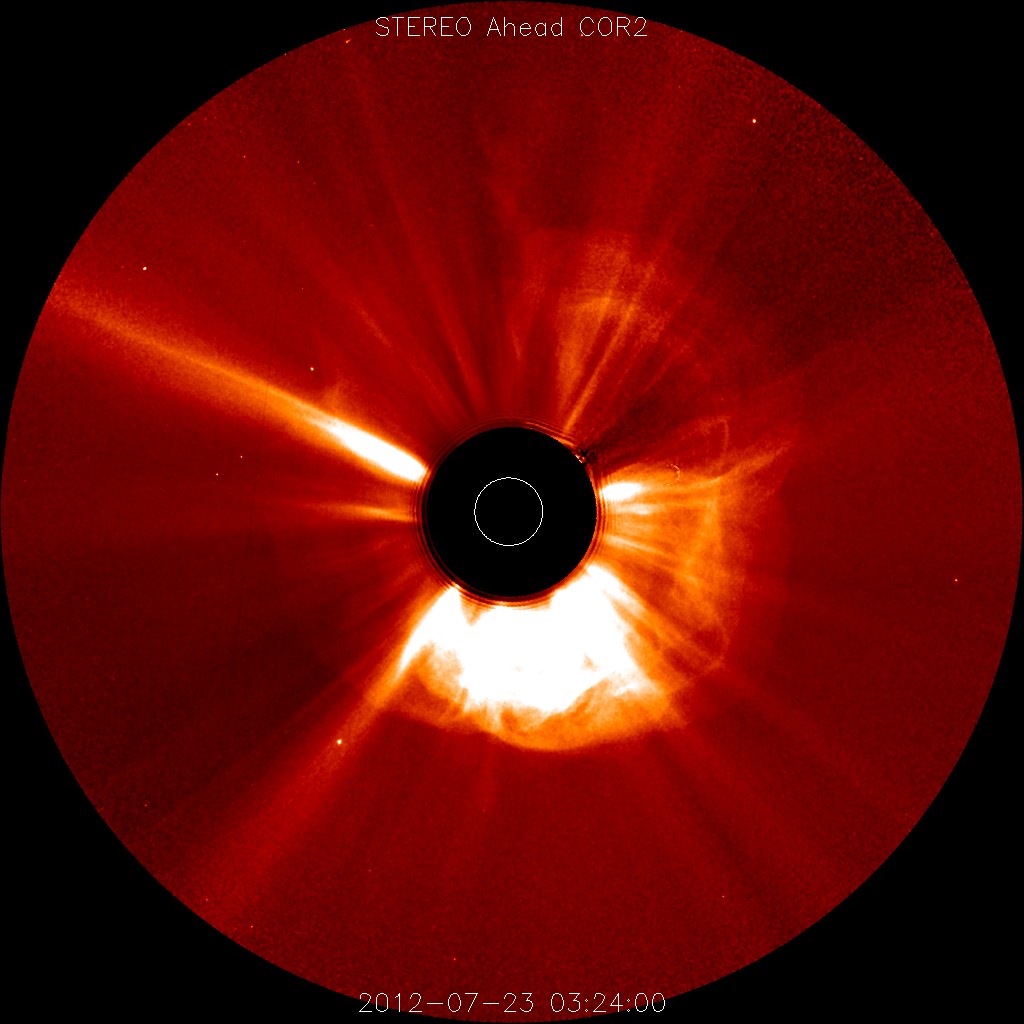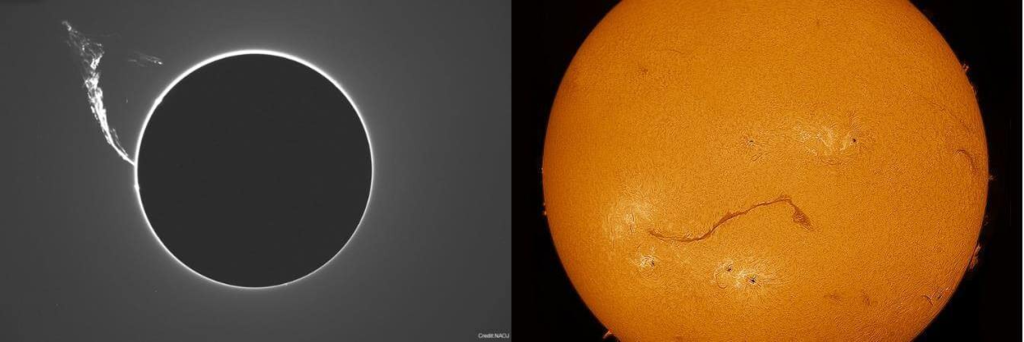
Solar Eruptions
Written by: Augustin André-Hoffmann, Shreeyesh Biswal, Jayesh Goswami & Shifana Koya
The Earth receives not just electromagnetic radiation but also a stream of charged plasma particles, called ‘solar wind’ released from the solar corona. At times the incoming radiation and plasma particles may show an abrupt increases indicating the occurrence of eruptions from the Sun. At times of high solar activity, the Sun produces an incredible amount of such eruptions that can drive hazardous space weather effects. They can be classified into three main types; Solar Flares, Coronal Mass Ejections (CMEs) and Prominence Eruptions.
Solar Flares
A solar flare is an intense solar eruption, that releases a whole spectrum of electromagnetic waves. It may be accompanied by CMEs and Solar Energetic Particle (SEP) events.
A solar flare is mainly caused by the phenomenon of ‘magnetic reconnection’, in which the energy stored in the magnetic field is abruptly converted into thermal and kinetic energy to accelerate plasma particles and emit electromagnetic radiation. Flares occur most commonly in the regions of the Sun where the magnetic field is stronger. The energy released for a single solar flare is estimated to be somewhere within 1020 and 1025 J that is equivalent of several millions of nuclear bombs.
For a quantitative understanding of the strength, solar flares are classified as A, B, C, M or X class flares depending upon the maximum of the X ray flux measured by the Geostationary Operational Environmental Satellite (GOES) satellites. X class flares are known to be the strongest and rarest flares.

Coronal Mass Ejections
A Coronal Mass Ejection (CME) is a large cloud of plasma and magnetic field expelled from the Sun into the heliosphere. A CME propagates through the interplanetary medium at supersonic speeds and reaches the Earth from one to five days.
The interaction of CMEs with the Earth’s magnetic field is responsible for the creation of beautiful auroras. When an Earth-directed CME interacts with the Earth’s magnetosphere, there can be considerable variations in the geomagnetic field. This Sun-Earth connection was observed for the first time at Bombay on September 1-2, 1859 by British astronomer Richard Carrington. That event popularly called as the ‘Carrington Event’ created a strong auroral display and caused serious damage to the telegraph infrastructure at that time.
The severe impacts of a CME were also observed during the Quebec blackout of 1989. Very recently on 28 October 2021 (Halloween week), a CME was detected after the observation of M and X class solar flares. Spectacular auroras were displayed in high latitude countries on 03 November 2021.

Prominences
One of the first observation of a prominence is attributed to Muratori in 1239 during a total eclipse. He didn’t understand what he saw since he talked about a burning ’hole in the moon’ as mentioned in ’Le Soleil’ by Father Angelo Secchi (1870). The first scientific report of this phenomenon is attributed to Birger Vassenius in 1733 who believed that it was a collection of clouds in the solar atmosphere.
It was not until the mid-19th century that these manifestations were linked to the Sun. What is called a prominence today is a bit vague. It is an structure in the chromosphere or the corona that is denser and cooler than its surroundings. The plasma in prominence is trapped in a strong magnetic field. It is the equilibrium between the magnetic field and the gravity of the Sun that allows the prominence to sustain.
We can observe a prominence with two different methods, on the limb (the edge) of the sun where it is seen by observing its emitted light, or on the surface disk where it is seen by observing the absorption of the light of the corona by the prominence. When seen by absorption it is called a ’filament’.
One of the two fates possible for prominences when they evolve is for the gravity to dominate and crush this equilibrium. In that case, the prominence goes back into the sun. In the other case, all or a part of the prominence can leave the Sun and can give rise to a CME. The lifetime of a prominence can go from few hours to few months. It mostly depends on the region of occurrence.
The ’feet’ of the prominence are rooted in the photosphere and they are constantly in motion. Usually, the lifetime of a prominence near an active region (a region with high magnetic activity) of the Sun will be shorter as compared to a prominence in a quieter region.

